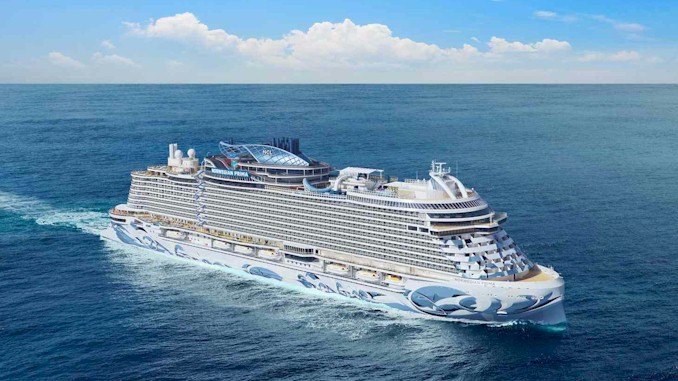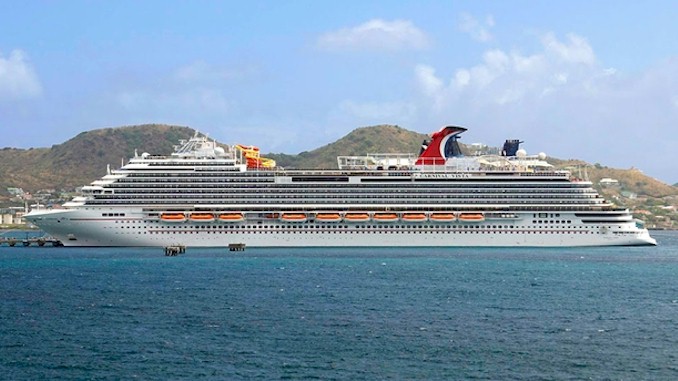Cruise Planning 101: Tips for First-Timers
If you’re reading this, then you’re likely interested in planning your first cruise. I understand that planning your first cruise can be overwhelming. When I was planning my first cruise, I spent almost every moment worrying and stressing about making sure that my cruise would go smoothly. Now, I’ve been on tons of cruises and have a lot of experience planning them. In this post, I will share with you some essential tips and strategies that will help you plan a fantastic cruise that meets your needs and preferences.
A cruise is a great way to explore various destinations while enjoying a luxurious vacation experience. To plan your first cruise, start by choosing the right ship and itinerary that aligns with your interests and budget. Research different cruise lines, destinations, and cabins to ensure that you find the best fit. Additionally, consider any specific preferences or needs you may have, such as dietary restrictions or mobility issues, and ensure that your chosen cruise can accommodate them. With proper planning and research, your first cruise can be an unforgettable experience.
In addition to the above tips, there are many more strategies and considerations to keep in mind when planning your first cruise. In the upcoming sections of this post, I will delve deeper into topics such as choosing the right cabin, packing essentials, navigating onboard activities, and more. By the end of this post, you’ll have all the information you need to confidently plan and enjoy your first cruise. So, if you’re ready to embark on an exciting journey and learn all about how to plan your first cruise, keep reading!
Choosing the Right Cruise Line and Itinerary
As a seasoned cruise enthusiast, I can confidently tell you that choosing the right cruise line and itinerary is the first and most crucial step when planning your first cruise. With years of experience under my belt, I’ve learned that each cruise line has its unique style and target audience, from family-friendly to luxury, adventure-focused to relaxed. Therefore, it’s essential to consider your preferences carefully before making a decision.
When selecting a cruise line, I recommend starting by researching various options online, reading reviews, and checking out their social media pages to get an idea of their style and offerings. This way, you can find a cruise line that aligns with your interests and preferences.
Another critical factor to consider when choosing a cruise line is the itinerary. With my experience, I can attest that the right itinerary can make all the difference in your cruising experience. Therefore, it’s essential to look for itineraries that match your interests and preferences, whether you’re interested in exploring cultural destinations, relaxing on beaches, or seeking adventure. Take note of the length of the itinerary and the number of ports visited, as longer itineraries offer more destinations but also come with a higher price tag and may not be suitable for everyone.
Additionally, as an experienced cruiser, I know the importance of considering the season and weather when choosing your cruise itinerary. Some destinations are best visited during specific times of the year, while others are year-round destinations. For instance, if you’re interested in cruising in the Caribbean, it’s best to avoid hurricane season, which runs from June to November. Researching the weather patterns of your chosen destination will help you choose the right time to cruise.
I’ve found that choosing the right cruise line and itinerary is crucial to ensuring a successful and enjoyable first cruise experience. By considering your preferences, researching various options, and taking your time to make the right decision, you can find a cruise that meets your needs and preferences.
Selecting the Best Cabin for Your Needs
I know that selecting the best cabin for your needs can make a significant difference in your overall cruising experience. The cabin you choose will be your home away from home during your cruise, and it’s essential to find one that suits your preferences and needs.
First, consider the location of the cabin. Cabins located closer to the ship’s center are typically less susceptible to motion, making them ideal for those who may experience seasickness. On the other hand, cabins located near the front or back of the ship provide easy access to specific amenities and facilities.
Next, consider the type of cabin you want. Interior cabins are typically the most affordable option, but they lack windows and natural light. Ocean view cabins have windows or portholes, providing a view of the sea. Balcony cabins offer a private outdoor space, perfect for enjoying the view or a morning coffee. Finally, suites offer the most space and luxurious amenities, but they come with a higher price tag.
Another crucial factor to consider when selecting a cabin is the cabin’s size and layout. Cabins vary in size and configuration, and it’s essential to find one that accommodates your needs. Consider the number of travelers in your group, as well as any specific needs, such as accessibility or connecting cabins.
Finally, as an experienced cruiser, I know that cabin location can significantly impact your cruise experience. Cabins located near high traffic areas such as elevators and stairwells can be noisy, while cabins on lower decks may be subject to more motion and vibration.
In conclusion, selecting the best cabin for your needs is essential to ensure a comfortable and enjoyable cruise experience. By considering the location, type, size, and layout of the cabin, you can find one that suits your needs and preferences. Additionally, researching the ship’s deck plans and consulting with a travel agent can help you make the best decision.
Packing Essentials for Your First Cruise
Packing for a cruise can be overwhelming, especially if it’s your first time. But with proper planning, you can pack everything you need and avoid overpacking. Here are some essential items to consider when packing for your first cruise:
- Clothing: Pack clothing suitable for the cruise’s dress code and itinerary. Most cruise lines have formal nights, so pack a cocktail dress or suit. Also, consider packing a variety of casual wear, including shorts, swimsuits, and comfortable shoes for shore excursions.
- Toiletries: While most cruise ships provide basic toiletries, it’s always a good idea to pack your own. Pack travel-sized shampoo, conditioner, soap, and lotion. Also, don’t forget to bring sunscreen and insect repellent.
- Medications: Make sure to bring all necessary prescription medications and any over-the-counter medicines you may need, such as pain relievers or motion sickness medicine.
- Electronics: Don’t forget to bring chargers for all your electronic devices, including phones, cameras, and laptops. Also, consider bringing a power strip or extension cord, as most cabins have limited outlets.
- Travel documents: Be sure to pack all necessary travel documents, including passports, visas, and boarding passes. Also, consider bringing a copy of your travel itinerary and emergency contact information.
- Other essentials: Don’t forget to pack other essentials such as a reusable water bottle, a day bag for shore excursions, and a small first aid kit.
As an experienced cruiser, I know that packing can be stressful. My advice is to make a list of all the items you need and check them off as you pack. Also, be sure to pack light and only bring what you need. Most cruise ships have laundry facilities, so you can easily wash your clothes during the cruise.
In conclusion, packing for your first cruise can be overwhelming, but with proper planning, you can pack everything you need and avoid overpacking. Be sure to pack clothing suitable for the cruise’s dress code and itinerary, toiletries, medications, electronics, travel documents, and other essentials. By following these tips, you can ensure a stress-free and enjoyable cruise experience.
Navigating Onboard Activities and Entertainment
One of the best parts of a cruise is the variety of activities and entertainment options available onboard. However, with so many options, it can be challenging to decide what to do. Here are some tips to help you navigate the onboard activities and entertainment:
- Plan ahead: Most cruise lines provide a daily schedule of activities and events, so be sure to review it each day and plan your schedule accordingly. Highlight the activities and events that interest you the most and prioritize them.
- Try new things: A cruise is an excellent opportunity to try new things, so don’t be afraid to step out of your comfort zone. Participate in a dance class, attend a cooking demonstration, or try rock climbing.
- Book in advance: Some onboard activities and entertainment require reservations, so be sure to book them in advance to ensure availability. Examples of such activities include specialty restaurants, spa treatments, and popular shows.
- Attend the onboard lectures: Many cruise lines offer onboard lectures on a variety of topics, including history, culture, and art. Attending these lectures can be an educational and engaging way to spend your time onboard.
- Take advantage of the amenities: Cruise ships offer a variety of amenities, including pools, spas, and fitness centers. Be sure to take advantage of these amenities during your cruise.
- Meet new people: A cruise is an excellent opportunity to meet new people from all over the world. Participate in social events and attend organized meet and greets to meet fellow passengers and make new friends.
I know that navigating onboard activities and entertainment can be overwhelming. My advice is to plan ahead, try new things, book in advance, attend onboard lectures, take advantage of the amenities, and meet new people. By following these tips, you can ensure a fun and engaging cruise experience.
Tips for Ensuring a Stress-Free First Cruise Experience
Embarking on your first cruise can be an exciting but overwhelming experience. To help ensure a stress-free cruise, here are some tips:
- Arrive at the port early: Arriving early can help alleviate stress and give you time to navigate the embarkation process. Most cruise lines offer online check-in, which can help expedite the process.
- Pack smart: Packing can be a daunting task, but packing smart can help reduce stress during your cruise. Be sure to pack essentials, such as medications, toiletries, and comfortable shoes. Also, consider the dress code for your cruise and pack accordingly.
- Keep important documents and valuables secure: Ensure that your passport, cruise documents, and valuables are kept in a safe place. Most cabins have a safe, and it’s recommended that you use it to store your valuables.
- Familiarize yourself with the ship: Take some time to explore the ship and familiarize yourself with the layout. Most cruise ships have maps and interactive screens throughout the ship to help you navigate.
- Stay organized: Keep your cabin tidy and organized to help reduce stress. Use luggage organizers and storage containers to keep your belongings organized and easily accessible.
- Stay hydrated: Staying hydrated is essential during a cruise, so be sure to drink plenty of water. Most cruise ships provide filtered water stations throughout the ship.
- Be mindful of time: Keep track of time and be mindful of the ship’s itinerary. Set reminders for important events and be sure to return to the ship on time when in port.
As an experienced cruiser, I know that following these tips can help ensure a stress-free first cruise experience. By arriving at the port early, packing smart, keeping important documents and valuables secure, familiarizing yourself with the ship, staying organized, staying hydrated, and being mindful of time, you can have a smooth and enjoyable cruise experience.







